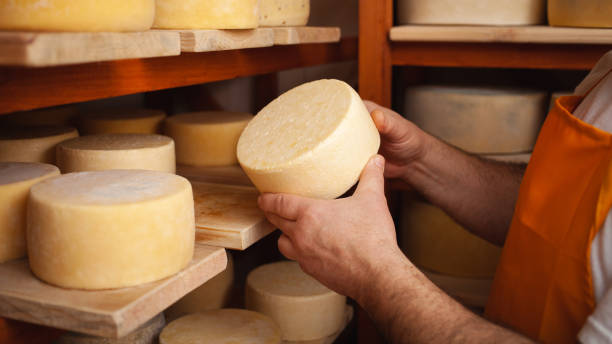Captivating World of Artisan Cheese
Cheese, a versatile staple, has been a part of the human diet for thousands of years. Yet, the world of artisan cheese is still a mystery to many. This article will take you on a journey through the intricate processes of cheese-making, the vast array of flavors, and the latest trends in the world of artisan cheese.

The Cheese-Making Process
The process of cheese-making is a mixture of art and science, resulting in a plethora of textures and flavors. The first step involves curdling milk using an enzyme called rennet. The curd is then cut into small pieces, allowing whey to separate. The size of the curd pieces affects the cheese’s texture. Smaller pieces result in harder cheese, while larger pieces yield softer cheese. The curd is then cooked and shaped before being aged, which further develops its flavor.
Flavor Profiles of Artisan Cheese
Artisan cheese can vary dramatically in flavor. Factors influencing taste include the type of milk used (cow, goat, or sheep), the diet of the animal, and the aging process. For instance, goat cheese is often tangy with a creamy texture, while sheep cheese can be nutty and rich. The aging process also affects flavor. Aged cheddar, for example, has a more complex taste than young cheddar.
The Rise of Cheese Pairings
In recent years, the concept of cheese pairings has gained popularity. Traditionally, cheese was paired with wine, but now beer, whiskey, and even tea are being used. The goal is to find combinations that enhance both the cheese and the drink. For instance, blue cheese pairs well with sweet wines and strong beers, while goat cheese is often enjoyed with crisp white wines or light beers.
The Art of Cheese Boards
Cheese boards are a popular way to showcase a variety of cheeses. A well-crafted cheese board includes different types of cheese (soft, hard, blue, etc.), along with accompaniments like fruits, nuts, and bread. The latest trend is to include unconventional items like chocolate or spicy jams, adding an element of surprise to the culinary experience.
Cheese in Cuisine
Cheese is not only enjoyed on its own but also plays a crucial role in many dishes around the world. From the classic Italian lasagna to the French croque monsieur, cheese adds rich flavors that can transform a simple dish into a gastronomic delight.
- Cheese Tip: Always serve cheese at room temperature to fully appreciate its flavor.
- Cheese Fact: The holes in Swiss cheese are formed by bacteria that produce gas as the cheese ages.
In conclusion, the world of artisan cheese is a fascinating one, filled with a variety of flavors and textures. Whether enjoyed on its own, paired with a drink, or savored in a dish, cheese offers endless culinary adventures. So, the next time you reach for a block of cheese, why not try something artisan and experience the magic of this ancient food in a new light?




